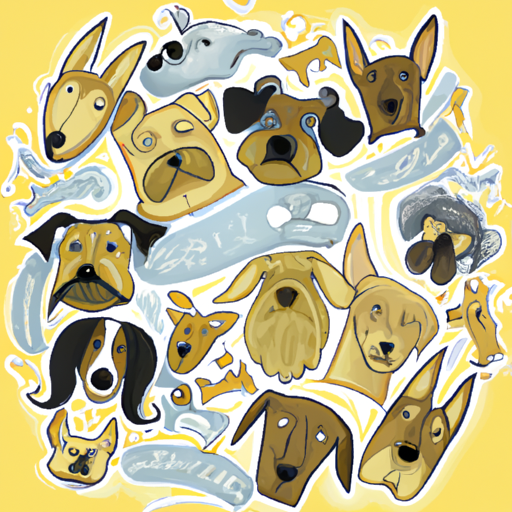Understanding the Canine Aesthetic
You’ve always been an animal lover, haven’t you? That innate ability to connect with creatures big and small is something special. It’s a trait not everyone possesses. So, when it comes to understanding what dogs look like, it goes beyond just physical appearances for you.
Dogs can come in all shapes and sizes, from the tiniest Chihuahua to the towering Great Dane. The diversity in dog breeds is truly astonishing, and each one brings unique characteristics to the table.
- Size: Ranges from small (less than 10 lbs) to giant (over 100 lbs).
- Coat: Can be short, long, curly, straight, rough, or smooth.
- Color: Comes in a rainbow of colors. Some breeds are known for specific patterns or markings.
- Ears and Tail: These can be floppy or erect, long or short, bushy or sleek.
The Beauty of Diversity
The beauty of dogs lies in their diversity. You, as a caregiver, understand the significance of each breed’s unique traits.
- Labrador Retriever: Known for their friendly and outgoing nature.
- German Shepherd: Valued for their intelligence and versatility.
- Beagle: Loved for their excellent sense of smell and tracking instinct.
- Bulldog: Adored for their loose, wrinkly skin and distinctive pushed-in nose.
It’s important to remember that each breed has been developed with specific purposes in mind. So, their appearance is often linked to their historical roles.
Canine Communication – Understanding Their Body Language
Understanding what dogs look like also involves interpreting their body language. A dog’s body language can tell you when they’re happy, scared, or even when they’re about to become aggressive.
| Body Part | Relaxed | Tense | Aggressive |
|---|---|---|---|
| Ears | Forward or at ease | Pulled back slightly | Pinned back |
| Mouth | Slightly open or closed | Closed tightly | Snarling |
| Tail | In natural position | Raised or bristled | Stiff and straight |
The Importance of Health – A Healthy Dog is a Happy Dog
A dog’s appearance can also indicate its health status. A healthy coat, bright eyes, and an active demeanor are all signs of a dog in good health.
- Coat: Should be shiny and free from dandruff or bald spots.
- Eyes: Should be clear and bright, with no discharge.
- Behavior: A healthy dog is usually eager to play and shows a good appetite.
The Impact of Aging – What to Expect as Your Dog Grows Older
Just like us, dogs age and their appearance changes over time. You might notice graying fur, clouding eyes, or a slower gait. These are all natural parts of the aging process.
FAQs
1. Why does my dog’s appearance vary from the standard breed characteristics?
Every dog is unique, and there can be variations even within the same breed. It’s the genetic diversity that makes your dog special.
2. How can I tell if my dog is unwell from their appearance?
Changes in behavior, eating habits, or physical appearance, like dull coat or red eyes, can signify health problems. Always consult a vet if you notice such changes.
3. Can a dog’s appearance indicate their personality?
While breed traits can suggest certain behavioral tendencies, every dog is an individual. Spend time with them to truly understand their personality.
Remember, the question “What do dogs look like?” is much more complex than it appears. With your caregiver’s heart and keen eye, you can appreciate the true beauty and diversity of our canine companions.



